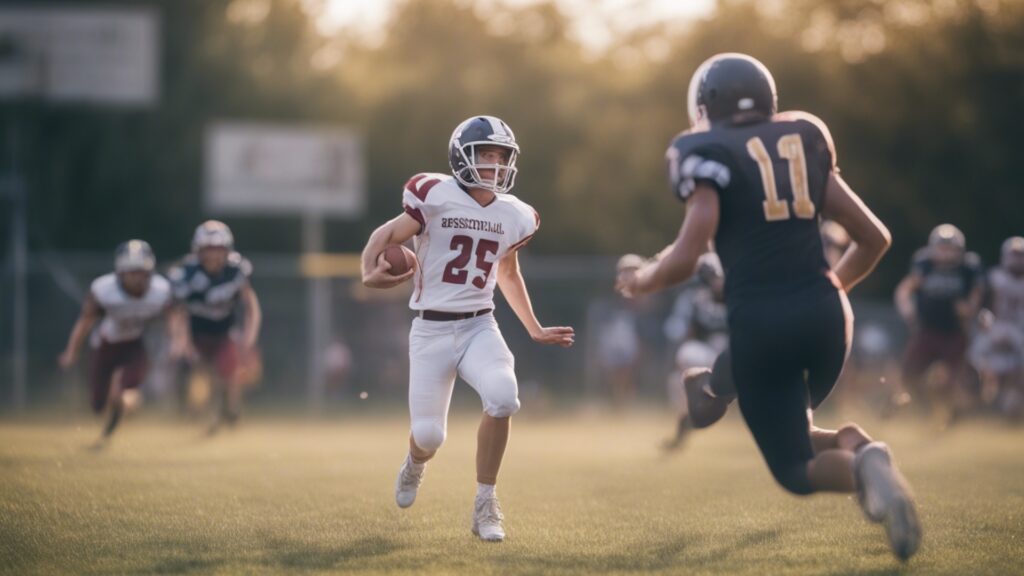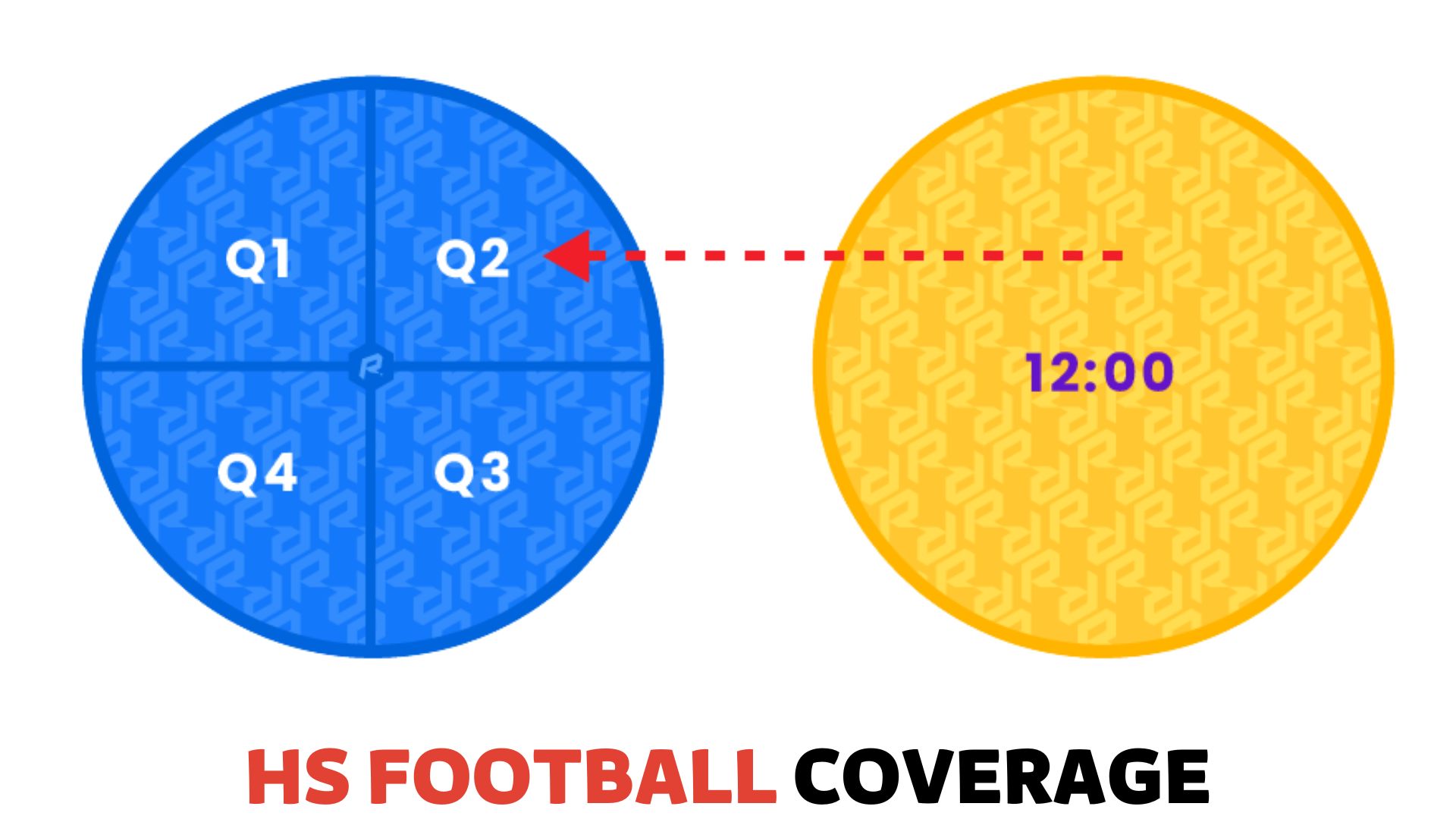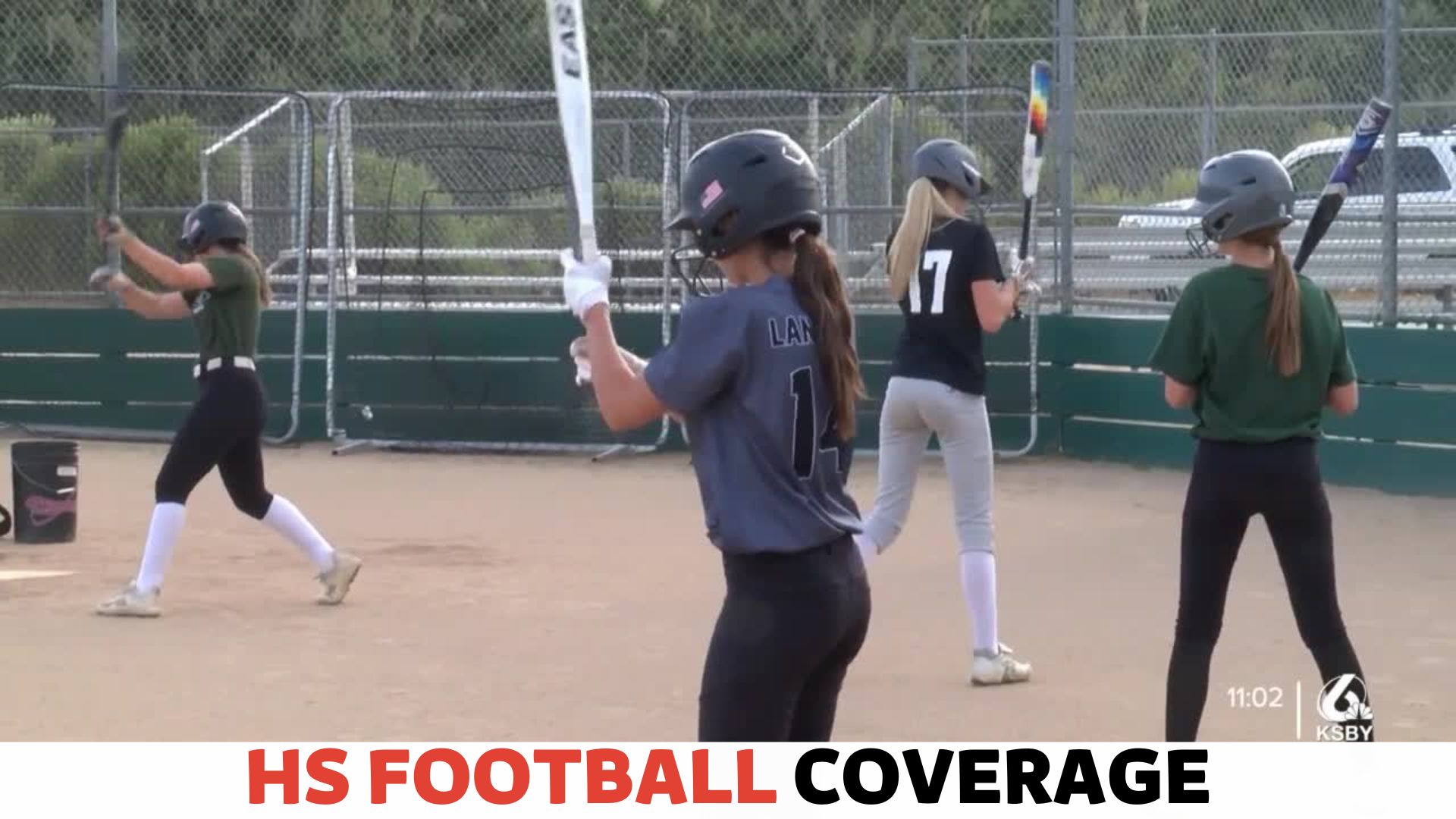
The transfer rules for high school sports outline the guidelines and restrictions for students who wish to change schools to participate in athletics. These rules vary depending on the governing body, state, and individual school district but generally involve eligibility requirements, paperwork, and a waiting period.
Navigating the transfer rules for high school sports can be challenging and complex. Whether a student is seeking better athletic opportunities or a family relocating to a new area, understanding the rules and regulations is essential.
These rules, set by the governing bodies, states, and school districts, determine eligibility and ensure fair competition among schools.
However, the specific transfer rules can vary greatly, making it crucial for students and their families to research and familiarize themselves with the guidelines wherever they transfer.
We will explore the general transfer rules for high school sports and shed light on what students need to know to successfully transition and participate in athletics at their new school.
Understanding the Importance of Transfer Rules

Transfer rules significantly impact high school sports, regulating student-athlete transfer from one school to another. These rules provide a framework to ensure fair and competitive environments for all players.
Understanding the importance of transfer rules is essential for maintaining the integrity of high school sports.
The Purpose of Transfer Rules for Maintaining Fairness and Integrity
Transfer rules are implemented to maintain fairness and integrity in high school sports and to prevent advantages arising from recruiting violations or unfair practices.
Establishing transfer guidelines will level the playing field, ensuring all student-athletes have equal opportunities to compete and succeed.
How Transfer Rules Protect Student-athletes and Prevent Recruiting Violations
Transfer rules are crucial in protecting student-athletes from being exploited or manipulated for the benefit of specific schools or teams. These rules prevent recruiting violations, which involve the unfair recruitment and enticement of student-athletes to transfer schools.
By implementing transfer rules, student-athletes are safeguarded and provided with an environment where their skills and abilities are valued and respected.
Transfer rules deter practices that may compromise the integrity of high school sports. They ensure that student-athletes are not coerced or pressured into transferring schools against their will. Instead, transfers are regulated and monitored to prevent any form of exploitation.
Eligibility Requirements for Transferring High School Athletes
High school athletes seeking to transfer must meet specific eligibility requirements determined by the transfer rules for high school sports. These rules aim to ensure fairness and maintain the integrity of high school athletic programs.
Checking Eligibility Rules Before Transferring Schools
Before transferring to a new high school as a student-athlete, it is crucial to understand and comply with the eligibility rules set by the respective athletics association. These rules ensure fair competition and maintain the integrity of high school sports.
Whether you are planning to transfer due to a change in residence, seeking better athletic opportunities, or for any other reason, it is important to thoroughly check the eligibility requirements before moving.
Academic Requirements for Transferring Student-athletes
Academic performance significantly determines a student-athlete’s eligibility to transfer to a new high school. To transfer and be immediately eligible to participate in sports, the athlete must meet the academic requirements set by the governing association.
The academic requirements may include maintaining a certain grade point average (GPA), completing specific coursework, and adhering to the academic progress rules. These rules prioritize education and encourage student-athletes to excel academically and athletically.
It is of utmost importance to monitor your academic performance and ensure you meet the eligibility requirements for your academic standing before considering a transfer.
The Role of Age and Grade Level in Determining Eligibility
When transferring high school athletes, age and grade level play a vital role in determining eligibility. The eligibility rules vary depending on the athletics association, but student-athletes generally adhere to age and grade-level regulations to ensure fair competition among athletes.
If you are considering transferring as a high school athlete, it is crucial to understand the age and grade level requirements set by the association governing the sports in your area.
These requirements may include limitations on the age and number of years of eligibility a student-athlete has in a particular sport or at a specific grade level.
By understanding these eligibility criteria, you can ensure a smooth transfer process without any surprises regarding your ability to participate in your chosen sport.
Navigating the Transfer Process
The transfer rules for high school sports can be complicated to navigate. Understanding the regulations and guidelines is important to ensure a smooth transition for student-athletes. Being well-informed is crucial for a successful transfer process, from eligibility requirements to academic considerations.
Introduction: Navigating the Transfer Process
Transferring to a new high school can be exciting and overwhelming. Whether you’re seeking better athletic opportunities, a different academic environment, or a change of location, understanding the transfer rules and navigating the process is essential.
This article will guide you through the steps, documentation, and timeline to make your transfer successful.
Steps to Follow When Transferring to a New High School
Transferring to a new high school requires careful planning and following the right steps to ensure a smooth transition. Here are the key steps to keep in mind:
- Research and explore your options: Research potential high schools that align with your goals and desires. Consider their athletic programs, academic curriculum, extracurricular activities, and location. Attend virtual open houses or schedule visits to the schools that interest you to get a firsthand feel for the environment.
- Contact the receiving school: Once you’ve identified your preferred high school, contact its admissions office to inquire about its transfer process. Ask for specific details regarding eligibility requirements, necessary documentation, and any transfer deadlines.
- Inform your current school: Next, inform your current school administration of your decision to transfer. They will provide you with the necessary paperwork to initiate the transfer process. You may need to complete withdrawal forms, submit academic records, and obtain a transfer eligibility form.
- Gather required documentation: To successfully transfer, you must gather essential paperwork. This typically includes birth certificates, proof of residency, academic transcripts, and completed health forms. Ensure you have multiple copies of each document, as some institutions may request originals.
- Submit the transfer application: Fill out the transfer application provided by the receiving school accurately and promptly. Double-check for any missing information or errors before submitting it. Include any additional required documents as listed on the application form.
- Attend admission interviews or evaluations: Some high schools may require prospective transfer students to attend an admission interview or evaluation. Prepare for these sessions by familiarizing yourself with common interview questions, organizing your accomplishments, and being ready to discuss your reasons for transferring.
- Wait for a decision: After submitting your application and completing any admission evaluations, patiently wait for a decision from the receiving school. They will notify you of their acceptance, denial, or any further steps required.
- Complete necessary paperwork: If your transfer request is approved, you’ll need to complete additional paperwork as directed by the school administration. This may include enrollment forms, consent forms, and transferring any applicable athletic eligibility.
- Transition smoothly: Once the administrative process is complete, focus on smoothly transitioning to your new school. Connect with your new teachers, coaches, and classmates to immerse yourself in the new academic and athletic environment. Embrace the opportunity to grow academically and athletically in your new high school.
Documentation and Paperwork Needed for a Successful Transfer
Transferring to a new high school involves gathering and submitting the necessary documentation to ensure a successful transfer process. The exact documentation needed may vary between schools and districts, but here are the typical documents you’ll need:
| Documents | Description |
|---|---|
| Birth certificate | A copy of your birth certificate is often required as proof of age and identity. |
| Proof of residency | Show documents such as utility bills or lease agreements to prove your current residence within the school district. |
| Academic transcripts | Provide copies of your academic transcripts from your current school, as these will help determine your eligibility and proper grade level placement. |
| Health records | Provide copies of your academic transcripts from your current school. These will help determine your eligibility and proper grade level placement. |
Remember to check with the receiving school regarding any additional documentation or forms they may require.
Understanding the Timeline and Deadlines for Transferring
When transferring to a new high school, timing is crucial. Each school district and state may have different regulations and transfer windows, so understanding the timeline and deadlines is essential for a successful transfer. Here are some key points to consider:
- Research transfer policies: Start by researching the transfer policies and deadlines specific to the high school, school district, and state you’re transferring into. Visit the school or district website, contact the admissions office, or consult a school counselor to gather accurate information.
- Plan: It’s advisable to start the transfer process well in advance to account for any unexpected delays. Aim to complete the necessary paperwork and submit your application as early as possible to avoid missing deadlines.
- Follow the academic calendar: Familiarize yourself with the academic calendar of the receiving school. This will help you schedule your transfer at an appropriate time, such as the end of a grading period or before the start of a new school year.
- Consider athletic eligibility rules: If you’re transferring to pursue athletic opportunities, pay attention to specific athletic transfer rules and deadlines. Some states or athletic associations might restrict eligibility or require a waiting period before participation.
- Communicate with schools promptly: If you have missed a transfer deadline or are facing time constraints, contact your current and receiving schools as soon as possible. Explain your situation and seek guidance on possible solutions.
Understanding the timeline and adhering to specific deadlines will increase your chances of a successful transfer without unnecessary complications.
Fair Play and Transfer Regulations
In high school sports, transfer rules are designed to ensure fair competition and prevent schools from gaining unfair advantages through excessive transfers.
These rules are implemented to maintain the integrity of high school athletics and promote fair play among all participating teams. Let’s explore how transfer regulations work to achieve this goal.
Ensuring Fair Competition Despite Transfers
When a student-athlete transfers from one high school to another, it can disrupt the competitive balance of sports teams. To tackle this issue, transfer rules are implemented to level the playing field and maintain fair competition.
One way to ensure fair competition is to impose a waiting period or to sit out the requirement for transferred athletes. This period allows the athlete to acclimate to their new school and prevents any immediate impact on the team’s strength. The exact duration of the waiting period may vary depending on the state and the sport.
Policies to Prevent Unfair Advantages for Schools With Many Transfers
Certain policies are enforced to prevent schools from gaining an unfair advantage by actively recruiting and accepting numerous transfers. These policies aim to discourage schools from creating stacked teams through an excessive number of transfers.
Some states have implemented policies that limit the eligibility of transferred athletes based on their previous participation in high school sports.
For instance, if an athlete has played for a particular school throughout their high school career, transferring to another school for athletic competitiveness may result in restricted playing time.
Moreover, an established system of documentation and verification is crucial to prevent the abuse of transfer regulations. By requiring thorough documentation of the student’s residency or guardianship, schools, and state athletic associations can ensure that transfers are genuine and not driven solely by athletic motives.
The Role of State Athletic Associations in Promoting Fair Play
State athletic associations play a vital role in promoting fair play and enforcing transfer rules.
These associations closely monitor transfers, ensuring compliance with the regulations. They guide schools and student-athletes regarding eligibility requirements and transfer procedures. State athletic associations can also conduct investigations where a possible violation of transfer rules is suspected.
Additionally, state athletic associations work towards establishing transparent and consistent transfer regulations. By consulting with stakeholders such as coaches, school officials, and parents, they strive to create rules that promote fair competition while discouraging the exploitation of transfer regulations.
Fair play and transfer regulations go hand in hand in high school sports. The goal of maintaining the integrity of high school athletics is achieved by implementing policies that ensure fair competition despite transfers and preventing schools from gaining unfair advantages.
With the active involvement of state athletic associations in promoting fair play, student-athletes across the nation can compete on a level playing field.
Consequences of Violating Transfer Rules
Transferring to a different high school to pursue sports opportunities can be an enticing prospect for student-athletes. However, it’s crucial to understand and adhere to the transfer rules to maintain fairness and integrity within high school sports.
Violating these transfer regulations can result in severe consequences, both for the student-athlete and the schools involved.
Penalties for Breaking Transfer Regulations
Regarding violating transfer rules, penalties can vary depending on the state and specific athletic association. These penalties discourage unethical transfers and maintain a level playing field for all high school athletes. Here are some common penalties that may be imposed:
- Ineligibility for a set period: Student-athletes who violate transfer regulations may be ineligible to participate in sports for a specific time frame determined by the athletic association or governing body.
- Loss of eligibility for championships: In addition to being temporarily ineligible, student-athletes who break transfer rules may be barred from participating in championship events, depriving them of potential accolades or opportunities for exposure.
- Financial penalties: Some states or associations may impose fines on schools guilty of transfer violations. These fines can be a significant burden for schools, taking away valuable resources that could have been allocated to support their athletic programs.
Impact on the student-athletes Eligibility and Future Opportunities
Violating transfer rules can have long-lasting consequences on a student athlete’s eligibility and future opportunities within high school sports. It’s important to understand how these violations can impact their sporting journey:
- Loss of eligibility in the new school: If a transfer is deemed illegitimate, the student-athlete may lose their eligibility to participate in sports at the new school. This can be a devastating blow, as it not only hampers their chances of competing but also separates them from potential teammates and coaches.
- Damaged reputation: A student-athlete violating transfer rules can tarnish their reputation within the sports community. Colleges and universities often scout high school athletes and prioritize individuals with integrity and ethical conduct. Violations may raise doubts about the athlete’s character and affect their prospects for scholarships or recruitment.
- Limited exposure and scouting opportunities: Participating in high school sports allows student-athletes to showcase their skills and gain exposure to college recruiters. However, those ineligible due to transfer violations miss out on valuable opportunities to be seen by scouts, potentially limiting their chances of landing a scholarship or securing a spot on a collegiate team.
How Schools Can Enforce Transfer Rules and Address Violations
Schools must proactively enforce these regulations to ensure fair play and compliance with transfer rules. Here are some steps schools can take to address violations:
- Educating student-athletes: Schools play a vital role in educating student-athletes about transfer rules and the consequences of violating them. Schools can help students make informed decisions and avoid unintentional violations by providing clear information and guidance.
- Monitoring and investigating transfers: Schools should closely monitor and investigate any suspicious transfers that may violate the rules. This may involve coordinating with athletic associations, conducting interviews, and obtaining documentation to ensure the legitimacy of transfers.
- Implementing consequences: When violations occur, schools must enforce the appropriate penalties and disciplinary actions. Holding student-athletes and schools accountable for their actions can preserve the integrity of high school sports.
- Promoting ethical behavior: Schools can foster a culture of integrity by promoting ethical behavior amongst student-athletes, coaches, and staff. Emphasizing fair play, respect, and sportsmanship can create an environment where transfer rules are respected and upheld.
Conclusion
To wrap it up, understanding the transfer rules for high school sports is crucial for athletes, coaches, and parents alike. Clear guidelines help maintain fair competition and uphold the integrity of the game.
By following the established regulations, players can navigate the transfer process smoothly, ensuring a level playing field for all.
Stay informed, stay compliant, and let the love of the game always prevail.















